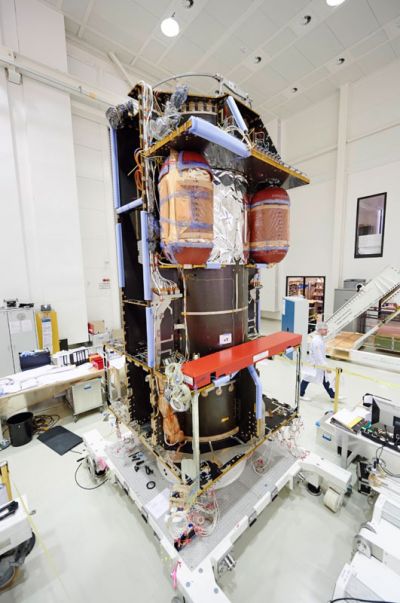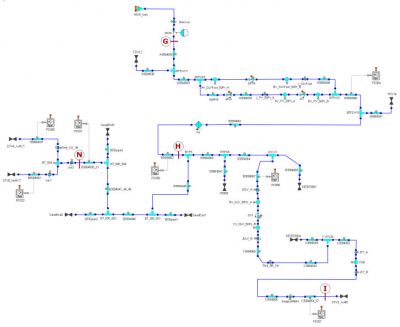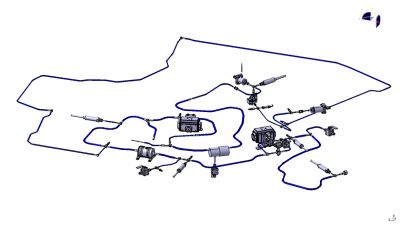Propulsion
OHB System develops, integrates, tests and operates propulsion systems for various satellite projects. These include monopropellant and bipropellant systems as well as electrical and cold-gas configurations.
Development work comprises the following activities:
- selection of the suitable propulsion technology, functions and redundancies
- sizing of the systems with respect to fuels, operating pressure, thermal requirements and integration in the satellites
- selection of components (tanks, drives, valves etc.)
- development of the interfaces with the satellite structure, thermal system, electronics and software
- procurement, integration, testing and operation of components and subsystems
These activities are closely dependent on requirements of the specific project with respect to orbit and attitude control as well as the satellite structural concept.
Further development work on propulsion systems entails the optimization of current propulsion technologies, system enhancement, supervision of component development and involvement in the development of new-generation propulsion technologies.
OHB primarily sees itself as a systems provider and integrator and therefore largely uses proven off-the-shelf equipment for its propulsion systems. Ideally, these systems are developed, configured and internally procured, while the manufacturing of tubing systems and assembly of the equipment is outsourced. Integration and testing of the propulsion systems are either performed internally or contracted out.
OHB System is currently working on the following propulsion system projects:
- Successful operation of the propulsion systems of the SAR-Lupe satellites for the German Federal Office of Defense Technology and Procurement for the duration of the ten-year operation phase
- Development and sourcing of the propulsion (chemical monopropellant) system for the EnMap research satellite on behalf of DLR
- Development and verification of the chemical bipropellant system, the electrical propulsion system and the Xenon cold gas system for the HAG1 telecommunications satellite based on the SGEO system
- Configuration, sourcing, integration and testing of the propulsion system for the Galileo IOV navigation satellites. Our team is now also supporting in-orbit satellite operations.
- Development, sourcing and testing of the complex chemical bipropellant system for the ExoMars Orbiter
- Development and procurement of the MTG propulsion system
- Further chemical and electric propulsion systems for satellites based on the SGEO platform (currently EDRS, Heinrich Hertz)
- Development of the fully electrically powered geostationary satellite platform Electra
In addition, studies are being conducted into future propulsion systems for planetary missions with a particular focus on Mars. A further aspect concerns original technological studies into propulsion systems, particularly the enhancement of existing propulsion technologies.

Example of development work: the Exomars Trace Gas Orbiter Mission
The Exomars Trace Gas Orbiter Mission is equipped with a bipropellant system. OHB System has been handling the configuration, analysis and main elements of sub-system engineering as a basis for efficient collaboration with the supplier. This also involved function testing to validate the propulsion system and the analysis approach which was partly used for validation the mission requirements as well.
OHB System’s propulsion-related activities for the ExoMars project:
- System engineering
Definition and management of functional conditions, requirements and interface. Verification of all important parameters and reconciliation with the requirements for successful execution of the mission - Analysis
Definition and simulation of all of the propulsion system’s operating conditions (including test sequences) Forecast of propulsion system response in operations and under extreme conditions and validation with test observations. - Procurement
Technical management of external suppliers. - Development testing
A complex test campaign with propellants (MON/MMH) for the liquid section and with helium for the pressure section of the propulsion system was executed using the suppliers testfacilities. The comparison with the predicted analysis data confirmed that the design was perfectly performed. - AIT
The sub-system integration work by the supplier in the main structure was supported, the thermal hardware integrated and internal testing of the functionality of the overall system was performed.



